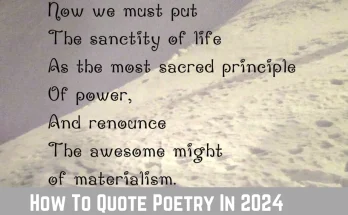Welcome to our comprehensive analysis of William Wordsworth’s poem, “An Evening Walk.” In this article, we delve deep into the themes, literary devices, and poetic techniques employed by Wordsworth to capture the essence of nature and the human experience.
Join us on this poetic journey as we explore the serene beauty and introspective musings conveyed through “An Evening Walk Wordsworth analysis.”
An Evening Walk Wordsworth Analysis: Exploring Nature’s Beauty through Wordsworth’s Poetry
Nature as a Reflective Haven
In “An Evening Walk,” Wordsworth paints a vivid picture of the natural world as a sanctuary for the human soul. Through his descriptive verses, he invites readers to immerse themselves in the tranquil ambiance of nature, seeking solace and introspection amidst its serene beauty.
The Power of Imagination
Wordsworth’s poem also emphasizes the transformative power of imagination. He suggests that by engaging our imaginations, we can transcend the limitations of our everyday lives and connect with something greater—be it the sublime beauty of nature or the depths of our own emotions.
Embracing Simplicity
Within “An Evening Walk,” Wordsworth celebrates the beauty of simplicity. He highlights the allure of unspoiled landscapes and seeks to remind readers of the profound joy that can be found in the uncomplicated moments of life.
An Evening Walk Wordsworth Analysis: Unveiling Nature’s Wonders: Literary Devices
Personification: Breathing Life into Nature
Wordsworth masterfully employs personification to animate the elements of nature in his poem. By attributing human qualities to natural phenomena, he enhances the reader’s connection to the environment, making it more relatable and emotionally resonant.
Symbolism: Unveiling Deeper Meanings
Symbolism plays a significant role in “An Evening Walk.” Wordsworth utilizes symbols such as the setting sun, blooming flowers, and flowing rivers to convey profound messages about the passage of time, the transient nature of life, and the eternal beauty of nature.
Alliteration: Enchanting the Ear
Through the strategic use of alliteration, Wordsworth adds a musical quality to his verses. By repeating consonant sounds, he creates a pleasing rhythm that adds to the overall aesthetic experience of reading or reciting the poem aloud.
An Evening Walk Wordsworth Analysis: Exploring the Poetic Techniques
Sensory Imagery: Painting Pictures with Words
One of Wordsworth’s most notable poetic techniques in “An Evening Walk” is his skillful use of sensory imagery. Through vivid descriptions and evocative language, he appeals to our senses, allowing us to experience the beauty of nature in all its glory.
Metaphor: Illuminating the Sublime
Metaphors abound in “An Evening Walk,” illuminating the poet’s message and evoking a range of emotions. Wordsworth’s metaphoric language enables readers to grasp the intangible aspects of the human experience by comparing them to tangible elements of the natural world.
Repetition: Reinforcing Themes
Wordsworth strategically employs repetition in “An Evening Walk” to reinforce key themes and ideas. By repeating certain phrases or words, he emphasizes their significance and underscores the overarching message of the poem.
An Evening Walk Wordsworth Analysis: Conclusion
In conclusion, “An Evening Walk” stands as a testament to Wordsworth’s mastery of poetic language and his ability to capture the essence of nature’s beauty.
Through his skillful use of literary devices and poetic techniques, he transports readers to a realm where the serene landscape intertwines with the complexities of the human experience.
By engaging with this poem, we are invited to reflect on our own relationship with nature and embrace the transformative power it holds.
Frequently Asked Questions
The central theme of “An Evening Walk” is the deep connection between nature and the human spirit. Wordsworth explores how immersing oneself in the natural world can bring solace, inspire introspection, and ignite the transformative power of imagination.
The evening setting in “An Evening Walk” symbolizes a transitional period—a time of reflection, quietude, and introspection. Wordsworth chooses this time of day to capture the ethereal beauty and tranquility of nature, allowing readers to experience its transformative power.
Wordsworth utilizes personification to breathe life into elements of nature. By ascribing human qualities to the setting sun, the flowers, and the rivers, he creates a sense of kinship between the natural world and the human experience, fostering a deeper connection with the reader.
“An Evening Walk” evokes a range of emotions, including awe, serenity, nostalgia, and introspection. Wordsworth’s masterful use of sensory imagery, symbolism, and metaphors allows readers to empathize with the poet’s contemplative mood and experience their own emotional response.
“An Evening Walk” exemplifies Wordsworth’s poetic philosophy of Romanticism. It celebrates the beauty and power of nature, the importance of imagination, and the pursuit of emotional truth. Through this poem, Wordsworth invites readers to reconnect with the natural world and find solace in its embrace.



